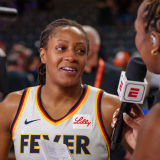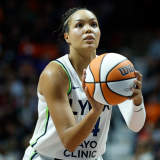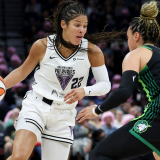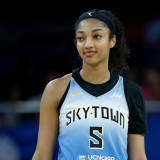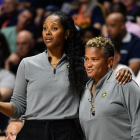WNBA playoffs: Three big Game 3 questions for Fever vs. Dream and Storm vs. Aces
The Fever and Storm both forced winner-take-all Game 3s in their first-round series
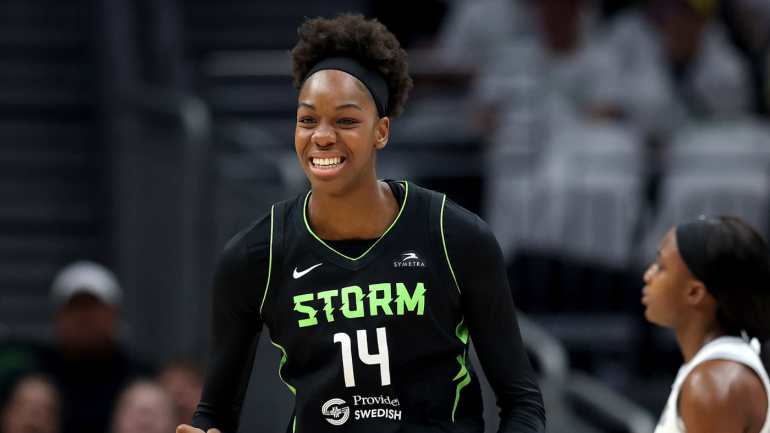
The 2025 WNBA playoffs will continue Thursday with a pair of winner-take-all Game 3s in the first round featuring the Las Vegas Aces vs. the Seattle Storm and the Atlanta Dream vs. the Indiana Fever. Due to the first-round format change, which is now 1-1-1 instead of 2-1, the higher seeds -- the Aces and Dream -- will have Game 3 at home.
Here's a look at the schedule:
Thursday, Sept. 18
- Game 3: No. 6 Fever at No. 3 Dream, 7:30 p.m. -- ESPN2/fubo
- Game 3: No. 7 Storm at No. 2 Aces, 9:30 p.m. -- ESPN2/fubo
Ahead of the action, let's take a look at three big questions that will decide which teams advance to the semifinals and which head home early.
How much does home-court advantage matter?
The WNBA tweaked the format for the best-of-three first-round series this season from 2-1 to 1-1-1.
The biggest issue with the old system was that it did not guarantee every playoff team a home game. Higher seeds got the first two games at home, which gave them a chance to sweep the series without having to travel. Most often, they did. From 2022-2024, the three seasons in which the best-of-three series was in place with a 2-1 format, the higher seeds swept nine of 12 first-round matchups.
Now, under the 1-1-1 format, every team gets at least one home game, and the lower seeds are reaping the benefit. On Tuesday, the No. 6 seed Fever crushed the No. 3 seed Dream to even their series at 1-1, while the No. 7 seed Storm pulled off a 14-point comeback against the No. 2 Aces to do the same. Compare that to last season, when the Fever and Storm were also both lower seeds in the playoffs, and were eliminated with single-digit defeats on the road in their respective Game 2s.
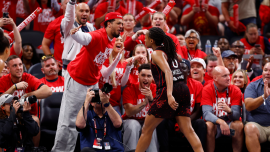
The other big difference with the 1-1-1 format is that it gives the higher seed the winner-take-all Game 3 at home, if necessary. On Thursday, we'll see just how much that matters.
The Aces were 17-5 at home this season -- tied for the second-best home record in the league -- and during their recent 17-game winning streak, which spanned both the regular season and Game 1 of this series, they had a plus-18.5 net rating at Michelob Ultra Arena. After a 25-point win at home in Game 1, it would be hard to bet against the Aces in Game 3.
The Dream were nearly as impressive at home this season. They went 16-6, which was the fourth-best home record, and had a plus-11.8 net rating at the The Gateway Center Arena. Their overall offensive performance during this series has been concerning, but they should shoot better at home and get a better whistle, which will be a big boost. In Game 1, they were 19 of 21 from the line en route to a double-digit win, while in Game 2 they were just 5 of 10.
Should Malonga be moved into the Storm's starting lineup?
In the closing minute of Game 2, rookie center Dominique Malonga came up with a huge stop on MVP favorite A'ja Wilson, then converted the go-ahead and-one on the other end to help the Storm complete a thrilling 14-point comeback and keep their season alive.
Malonga's defensive efforts in the fourth quarter were tremendous, as she helped hold Wilson scoreless over the final seven minutes. All told, Malonga finished with 11 points, 10 rebounds, three assists and two blocks on 4 of 7 from the field in 23 minutes. While single-game plus-minus stats aren't the be-all and end-all, she was a plus-11 in a three-point win.
dominique malonga defense during storm's comeback in game 2 vs aces pic.twitter.com/aBz9ny88VO
— jack maloney (@jackmaloneycbs) September 17, 2025
This series, Malonga is averaging 11.5 points, 10.5 rebounds, 2.5 assists and 1.5 blocks and is the only player rotation player on the team with a positive plus-minus. The Storm have won her 47 minutes by one point. On the other hand, they have lost starting center Ezi Magbegor's 47 minutes by 23 points.
For what it's worth, here's a look at Wilson's shot attempts and fouls drawn resulting in free throws against Magbegor and Malonga in Games 1 and 2. Note: data was hand-tracked.
- vs. Magbegor: 8 of 14, three fouls drawn resulting in free throws
- vs. Malonga: 3 of 7, five fouls drawn resulting in free throws
All of which brings us to the big question facing coach Noelle Quinn: should Malonga be moved into the Storm's starting lineup for Game 3?
Malonga's impact on the series has been undeniable, and she has the length and athleticism to bother Wilson. But would she have the same success as a starter playing bigger minutes? And is she ready, as a 19-year-old rookie, to start a winner-take-all playoff game on the road?
Can the Dream's offense get back on track?
While the Dream made the playoffs in each of the last two seasons, they finished under .500 and had one of the worst offenses in the league both times. In 2023, they went 19-21 with a 99.7 offensive rating that ranked ninth in the league, and in 2024 they went 15-25 with a 96.6 offensive rating that ranked last in the league.
One of the primary reasons they fired Tanisha Wright and replaced her with Karl Smesko this offseason was because they thought his modern approach on the offensive end could make a big difference.
Sure enough, the Dream's offensive rating jumped to 108.2 this season -- nearly 12 points better per 100 possessions than last season -- which was good for second in the league. They started launching 3-pointers, were relentless on the offensive glass and lived at the free throw lines at times.
The Dream's defense remained strong, and thanks to their much-improved offense, they won a franchise-record 30 games and earned the No. 3 seed in the playoffs. But now, they're facing a must-win Game 3 at home to avoid losing in the first round for the third consecutive season.
Thus far, the Dream's offense has reverted to 2023-24 form in the playoffs. They have an 88.1 offensive rating through the first two games against the Fever, have shot below 39% in both games and have committed 31 turnovers. Their 60 points in their Game 2 defeat were the third-fewest in a playoff game in franchise history.
The Fever have done a particularly good job on Allisha Gray and Rhyne Howard, the Dream's leading scorers and primary shot creators. Those two have combined for just 59 points on 18 of 58 (31%) from the field, and have often had to settle for contested jumpers or out of control attempts in the paint.
It's worth noting that the Dream's regular-season success was largely predicated on overwhelming lesser teams; they went 17-3 against lottery opponents and 13-11 against playoff foes. And for all their 3-point volume, they can't really shoot. Their 33.7% mark from behind the arc ranked seventh in the league and Te-Hina Paopao and Allisha Gray were the only players who shot above 35% on any sort of volume.
Can the Dream be better on offense than they have been in Games 1 and 2? Absolutely. Are they going to be the team we saw in the regular season? Probably not.


